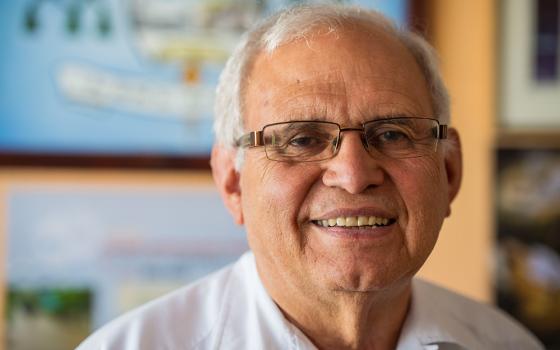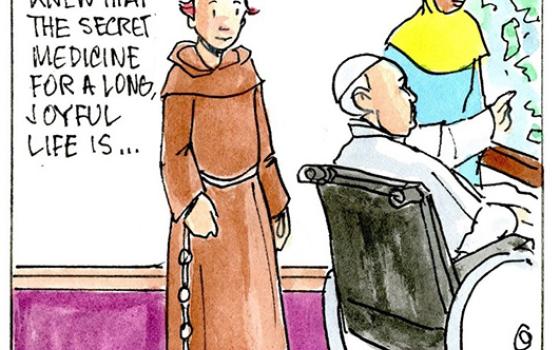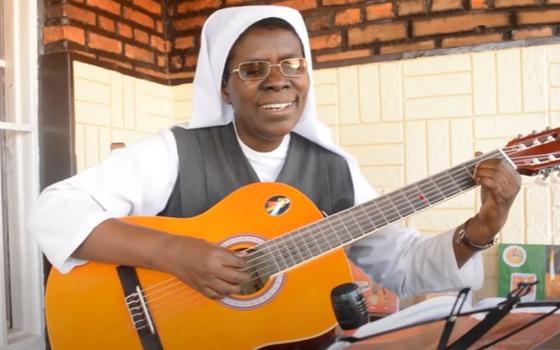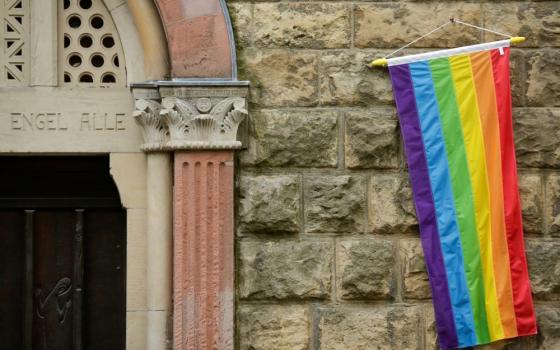The Tony Auth cartoon that appeared in The Philadelphia Inquirer and was reproduced in The New York Times on Sunday, May 22 -- four days after the release of the John Jay College’s five-year, $1.8 million study of the sexual-abuse crisis in the Catholic priesthood -- said it all.
The cartoon showed a pie-eyed bishop lying on the ground smoking a water pipe, labeled “Rationalization,” and blaming everything on the ‘60s culture of permissiveness.
Unfortunately, the study pretty much lets the U.S. bishops escape responsibility for the crisis, although the 300-page document, “The Causes and Context of Sexual Abuse of Minors by Catholic Priests in the United States, 1950-2010,” does urge the bishops to adopt uniform, secure policies characterized by genuine transparency and true accountability.
The advice apparently has fallen on deaf ears in some major and not-so-major dioceses around the United States.
Now that the study has been out for a while, the critics are beginning to sharpen their knives.
I am relying here in large part upon Tom Roberts’ story:, Critics point to John Jay study’s limitations.
“Questions persist,” Roberts writes, “about the reliability of the basic data that underpins both the most recent study, as well as one on the nature and scope of the scandal that was released in 2004, because the researchers relied principally on reporting by bishops.”
Bishops appointed by Popes John Paul II and Benedict XVI, one might add, still have a vested interest in making the church and its priesthood look as good as possible and, in the process, making their own stewardship of the crisis seem unassailable. This is directly challenged by a recent grand jury report in Philadelphia.
Second, the “conclusion that priests’ behavior was influenced by and reflected turmoil in American culture during the 1960s and 1970s” fails to take into account that the scandals have spread to other, non-American locations -- such as the United Kingdom, Ireland, and several European countries, including Poland.
Third, the study failed to go into any depth regarding “institutional dynamics, particularly clerical/hierarchical culture,” which many think is integral to understanding why the scandal was covered up and tolerated for so many years.
Fourth, the study concentrates on the behavior of priests. But questions persist about the role that bishops have played in protecting perpetrators and in moving predatory priests from place to place, thereby exposing innocent children to further abuse and often without even informing the pastor of the abuser’s new assignment.
Margaret Leland Smith, data analyst for the study, was asked during a two-day program on sexual abuse at Marquette University Law School in early April whether the public could assume that the study did take into account all the relevant data submitted by the bishops.
Her answer was a bit circuitous, but here it is: “Whether or not the count includes all, the fact that all of the allegations, almost all we had, were supported by evidence and substantiated means that one can make an inference that there may have been other allegations that the dioceses did not submit because they did not find them substantiated. I have no evidence one way or the other on that.”
After her reply, she joked, “I’m going to get in trouble for that.”
Richard Sipe, a married priest who has written widely on the sexual-abuse crisis, cites as one of the study’s weaknesses its failure to account for clerical culture except in a “very small, non-essential way.” He also points to various institutional elements that are peculiar to Catholicism (but not to the United States) and that the study ignored: secrecy, clericalism, and authoritarian-ism.
These have surfaced, Sipe notes, as the sexual-abuse scandal in the priesthood spread to other countries.
Dominican Fr. Thomas Doyle, a former Air Force chaplain, is the leading advocate for victims of sexual abuse by priests and often serves as a consultant and witness for aggrieved parties.
He points out that while the John Jay study is limited to the United States and to the years 1950 to 2010, there are signs in other countries that sexual abuse by priests and other ecclesiastical persons had occurred widely well before the period under study.
“These are incidents,” Doyle insists, “that happened that had nothing to do with sociocultural changes in the ‘60s and ‘70s.”
He also points out that the study is concerned with the behavior of priests, but not with that of bishops. He asks: “When the abuse and abuser became known to church authorities, why were [the abusers] allowed to continue doing what they did?”
Good question.
[© 2011 Richard P. McBrien. All rights reserved. Fr. McBrien is the Crowley-O’Brien Professor of Theology at the University of Notre Dame.]
Editor’s Note: We can send you an e-mail alert every time Fr. McBrien’s column, "Essays in Theology," is posted to NCRonline.org. Go to this page and follow the directions: E-mail alert sign-up. If you already receive e-mail alerts from us, click on the "update my profile" button to add "Essays in Theology" to your list. |




